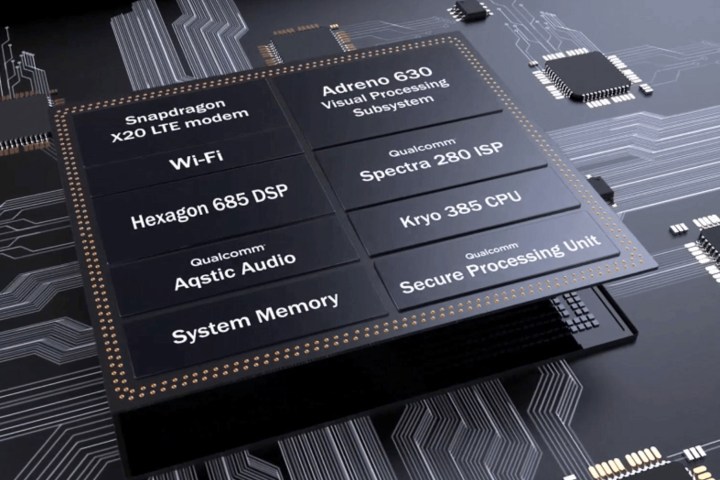
Qualcomm is expected to reveal a new processor dedicated to stand-alone VR headsets next week during the Augmented World Expo in Santa Clara, California. Called the Snapdragon XR1, the all-in-one chip will consist of CPU cores, a graphics processor, one component dedicated to security, and another dedicated to artificial intelligence. It will also support voice control and head-tracking interaction, sources claim.
This isn’t the first time we’ve heard the term “XR” from Qualcomm. The company mentioned XR when it revealed its new Snapdragon 845-based VR headset reference design earlier this year, and covered the XR topic at great length during the North American Augmented World Expo convention in 2017. XR is short for “extended reality,” an “umbrella term” that covers augmented reality, virtual reality, and mixed reality.
“XR is an emerging umbrella term that is already being used to encapsulate AR, VR, and everything in between,” Qualcomm said in January. “XR is a mobile market that’s gaining momentum as VR and AR markets may combine to create a $108 billion market by 2021.”
Qualcomm’s latest headset reference design supports room-scale six degrees of freedom, meaning you can move left, right, up, down, forward, and backward without any wires or external sensors. It also includes a “slam” component — simultaneous localization and mapping — that not only keeps track of your physical environment, but tracks where you’re located within that environment.
That said, the Snapdragon 845 isn’t really an XR-first chip but it certainly supports “immersive XR experiences.” The chip packs eight Kyro processor cores, the Adreno GPU supporting XR, components for audio and cameras, built-in Wi-Fi and LTE connectivity, and a processing unit dedicated to security. It also contains a co-processor, the Hexagon 685 DSP, tuned for artificial intelligence and machine learning.
So why the XR1 chip? It could be a custom version of the Snapdragon 845 without all the phone-centric necessities and fine-tuned for augmented reality and virtual reality experiences. Qualcomm also likely tweaked the architecture to pull better battery life out of an XR headset. We expect to see a new reference design along with the new chip during the show next week.
Sources close to Qualcomm’s upcoming XR1 launch claim that the company is currently working with HTC, Vuzix, and several other headset manufacturers to incorporate the chip into future headsets. HTC’s current stand-alone VR headset, the Vive Focus, will hit North American shores later this year based on Qualcomm’s first VR headset reference design. Facebook’s just-released Oculus Go, manufactured by smartphone maker Xiaomi, relies on Qualcomm’s older Snapdragon 821 chip.
Stand-alone headsets are a new trend in the VR market, as they don’t require an expensive tethered PC like the HTC Vive and Oculus Rift, nor do they rely on a smartphone like Samsung’s Gear VR. Google and Qualcomm first revealed their stand-alone VR initiative last year with HTC and Lenovo serving as showrunners. But Lenovo is thus far the only stand-alone Daydream headset provider while HTC abandoned ship and did its own Google-free thing in China.
Editors' Recommendations
- Meta Quest 4: Here’s what we want from the next big VR headset
- What is VR?
- Qualcomm’s Snapdragon X35 will bring 5G to your next smartwatch
- AR glasses will have a dedicated Qualcomm chip in 2023
- Qualcomm’s Snapdragon 6 and 4 Gen 1 chips are big deals for cheap phones


